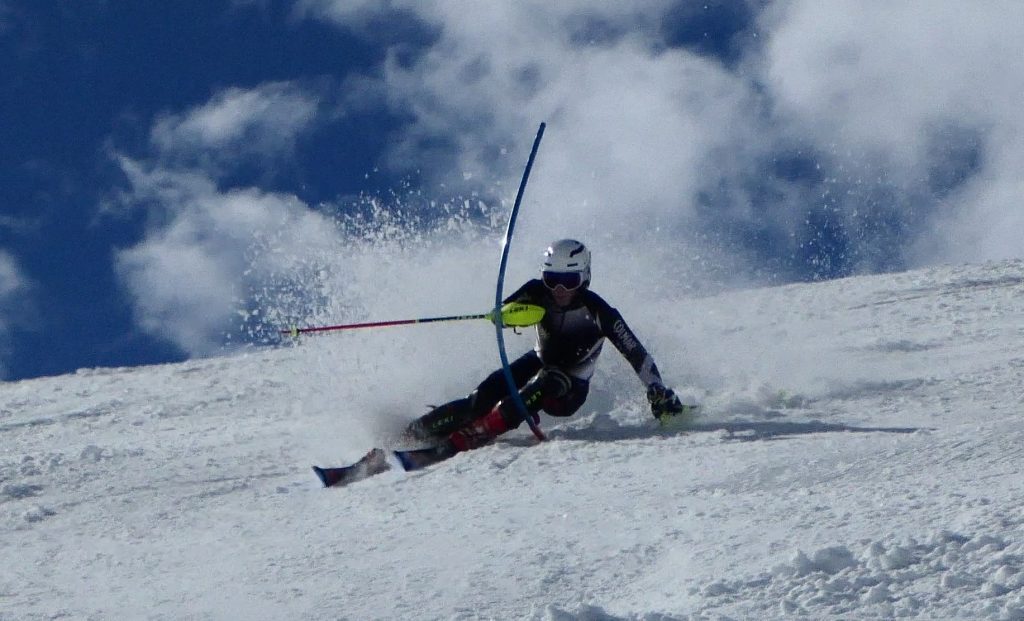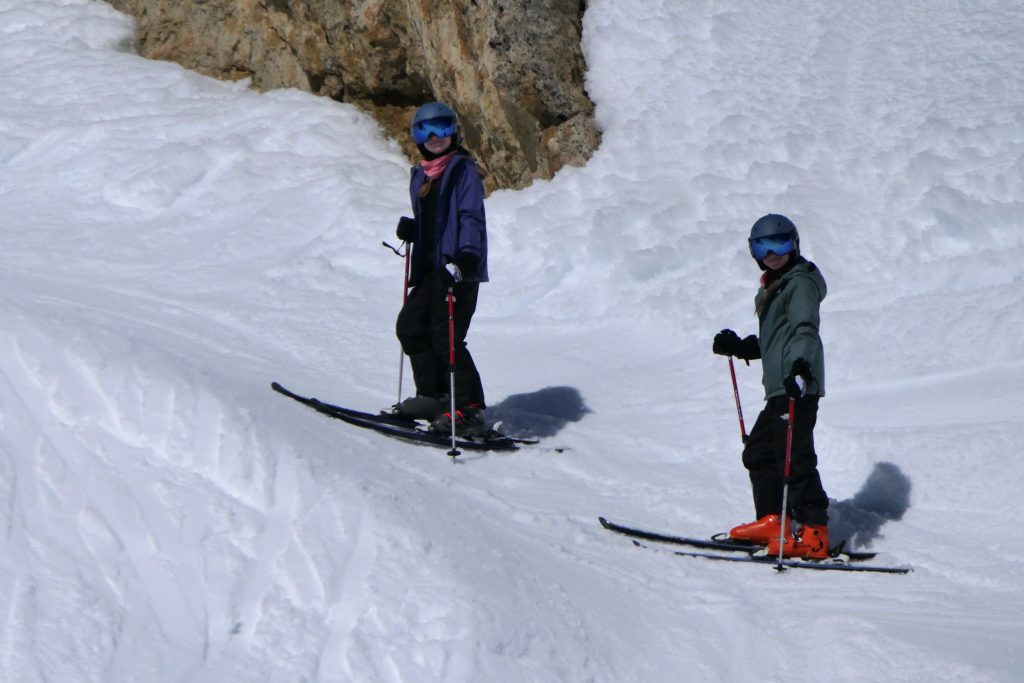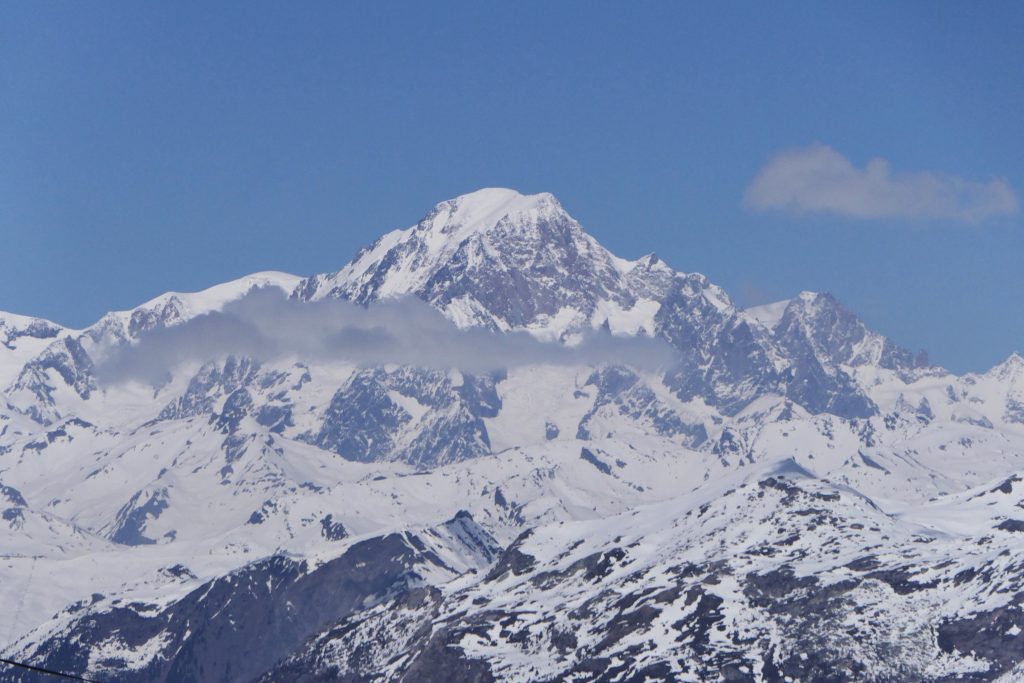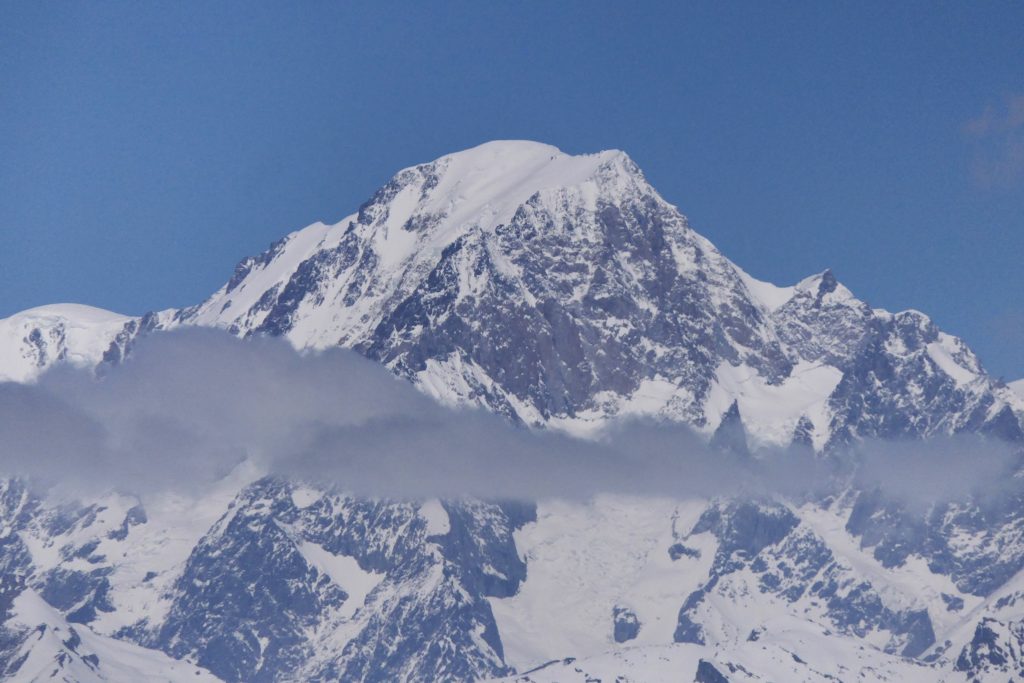We did some real skiing today – first warming up on piste with some long runs then off piste of which only short snippets were filmed. The girls were then taught how to pivot (below) and how to exploit this in normal (and steep) dynamic skiing – which was then used to safely and comfortably ski a black run (last video clip).
No bad (…that’s Scottish for “excellent”) for their first ever week on snow!
Pivot
After learning skating turns on the flat this is the way beginners should learn to turn for dealing with gradients. They should be assisted if required – by holding a ski pole at the side of the instructor and being physically led through all the moves – just like someone being led in a dance. Eventually the skill is assimilated due to the body being fed the correct feeling repeatedly. Some athletic beginners can cope with this manoeuvre on their own.
The reason for this pivot is to develop fall-line skiing skills. It’s a “braking” form of turn which gives great control over speed – because of the skis only being used on uphill edges. The other important element of this pivot is that both feet are kept downhill of the skier (vertically below the skier) which is not only a fun and playful way to ski but is critical for safety on dangerous steeps such as in couloirs. Most people are totally brainwashed in the skiing world into believing that a ski only turns because of its inside edge with its sidecut. Well it does, but not all of the time. The ski can also turn while on its outside edge during the first half of a turn. If someone has already worked on sideslipping then they already partly know the mechanism for this.
The skier has to stand on the uphill ski only, lifting the lower ski off the snow. The foot should feel pressure on its outside edge but the adductor muscles of this leg should be pulling in the downhill direction. The ski will remain on its outside edge (due to the lateral support of the ski boot shaft preventing the ski from flattening). The downhill pole should be planted for support and so when the lower ski is lifted the body weight should be partially transferred to the pole. This requires the skier to face downhill and tilt forwards from the hips (angulation). Place the centre of mass downhill as much as possible with the use of support from the ski poles. Try to keep the ski on its uphill edge while the centre of mass moves downhill of it. The use of the pole here is to support and guide the centre of mass – which then pulls the ski tip downhill along with it. (In dynamics, skiing with only forward motion of the ski, the pole is not required because the support for the centre of mass comes from the lifting up power of the ski itself. This is why pole planting is only associated with pivoting – sideways motion – and not with dynamic – forward motion – skiing – where only a pole touch at most is required when entering a turn)
The adductor muscles of the outside leg continue to be engaged to allow the centre of mass to pull the front of the ski downwards in a sideslip into a turn. This trains the correct muscular coordination – pulling inwards towards the turn centre with the adductor muscles (of the “outside” leg).
To check that the adductor muscles are being used the “Pole Stopper” exercise is useful. For this exercise I place a ski pole between the tips of the two skis. The skier lifts a ski a few inches off the snow and then pulls the tip against the pole. If the adductor muscles are being used then as the tip is blocked the tail should swing inwards at the back. If the tail swings outwards then the it’s the muscles on the outside of the leg (abductors) being used to push and twist (torque) rather than the adductors (inside of the leg) being used to pull or tension the leg laterally.
When the pivot starts the skier (centre of mass) has to move downhill slightly from the ski but not too much because the ski must remain on the uphill edge for as long as possible. Moving the body too much downhill would change the ski edges far too quickly – for this effect the ski must be allowed to sideslip right from the beginning. The ski will change edges when it is in the fall-line, onto the new “inside” uphill edges for the last part of the turn. All the time – from start to end of the turn the skier needs to pull inwards and tension the adductors.
Completing the turn correctly requires the skier to avoid body rotation and to have the body in an anticipated and angulated stance, ready for another pole plant at the start of the next turn.
Turning on the inside ski is much harder to do – and for easier coordination it’s best to use the preferred foot – eg. right foot for somebody who is right handed.
Pressure is initially felt on the inside edge of the foot with the adductors held tight (pulling uphill) and the ski is initially on its inside edge (uphill). Strong pole support is necessary to get the centre of mass downhill of the ski and a lot of commitment to using the pole is required. It’s much more difficult to get the centre of mass far enough downhill for a smooth pivot when standing on the lower leg. Whereas the outside ski pivot is a great way to start developing good angulation – the inside ski helps to develop more advanced angulation – by exaggerating the “end of turn” angulation requirements. People generally have the greatest trouble with angulation through the second half of a turn – learning to link pivots is the ideal way to develop Angulation and Anticipation skills.
Linking Pivots
Linking the pivots is a true test of edge control and skillful directing of the centre of mass.
Two Skis (Close Stance)
Competition bumps skiers have their feet close together and many people swear by a “two footed” platform off-piste. This works because both skis pivot always on their uphill edge. The feet are always kept downhill of the body and so are the knees. Using the adductor muscles of both legs pulls the skis together and strengthens the stance. It’s important however to always orient the body on only one hip – preferably the outside one. The hip is the biggest joint in the body and it is very close to the centre of mass. Any confusion around this area leads to confusion everywhere. Motion starts from the centre of mass – so use your outside hip in the turn – pulling it backwards during the turn – to get your reflexes working and your core muscles protecting your back the most efficiently possible.
See…
Off Piste Fall line
Short Swings (Jump Turns)
Moguls
Angulation
Anticipation
Combining Dynamics and Pivot
- Dynamics depends of forward motion of the skis and lateral falling/pushing of the centre of mass
- Pivot depends on lateral motion of the skis – but always with the centre of mass being driven inward (toward the turn centre) modulated by the support of a pole plant
- The two can be combined – when there is both forward and lateral motion – making overall control of trajectory and speed totally under control of the skier
- In all cases there must be active adductor muscle use – and the feet must be “everted” i.e. turned outward inside the ski boots – diverging sightly (skating stance)
- The essential element to take from combining pivot and dynamics is to execute the turn transition from the uphill edge of the uphill ski – noting that the ski enters the new turn more easily than when on its inside edge and this also prevents stemming (and body rotation)
- Additionally with the transition between the two turns being made from the uphill edge it’s easy to switch into a very tight pivot when desired
Look at the skis in the two images below. The top image is with skis carving – the bottom image skis pivoting


Photos from today…


Bottom left of the picture you can see a distant chairlift “La Rosière” which goes up to the border with Italy – there’s an ancient Celtic stone circle at the top of that ridge at 2200m altitude.


